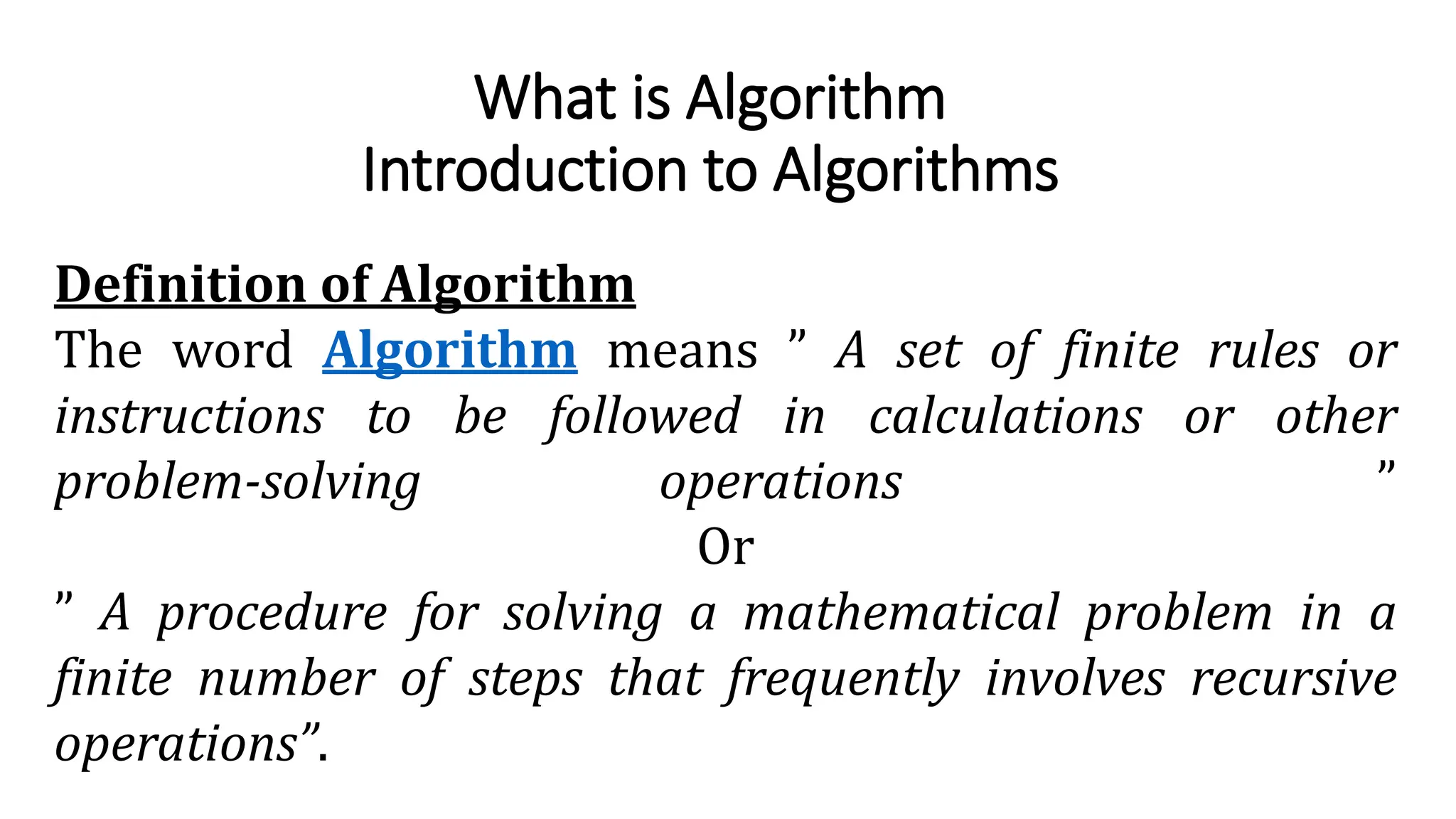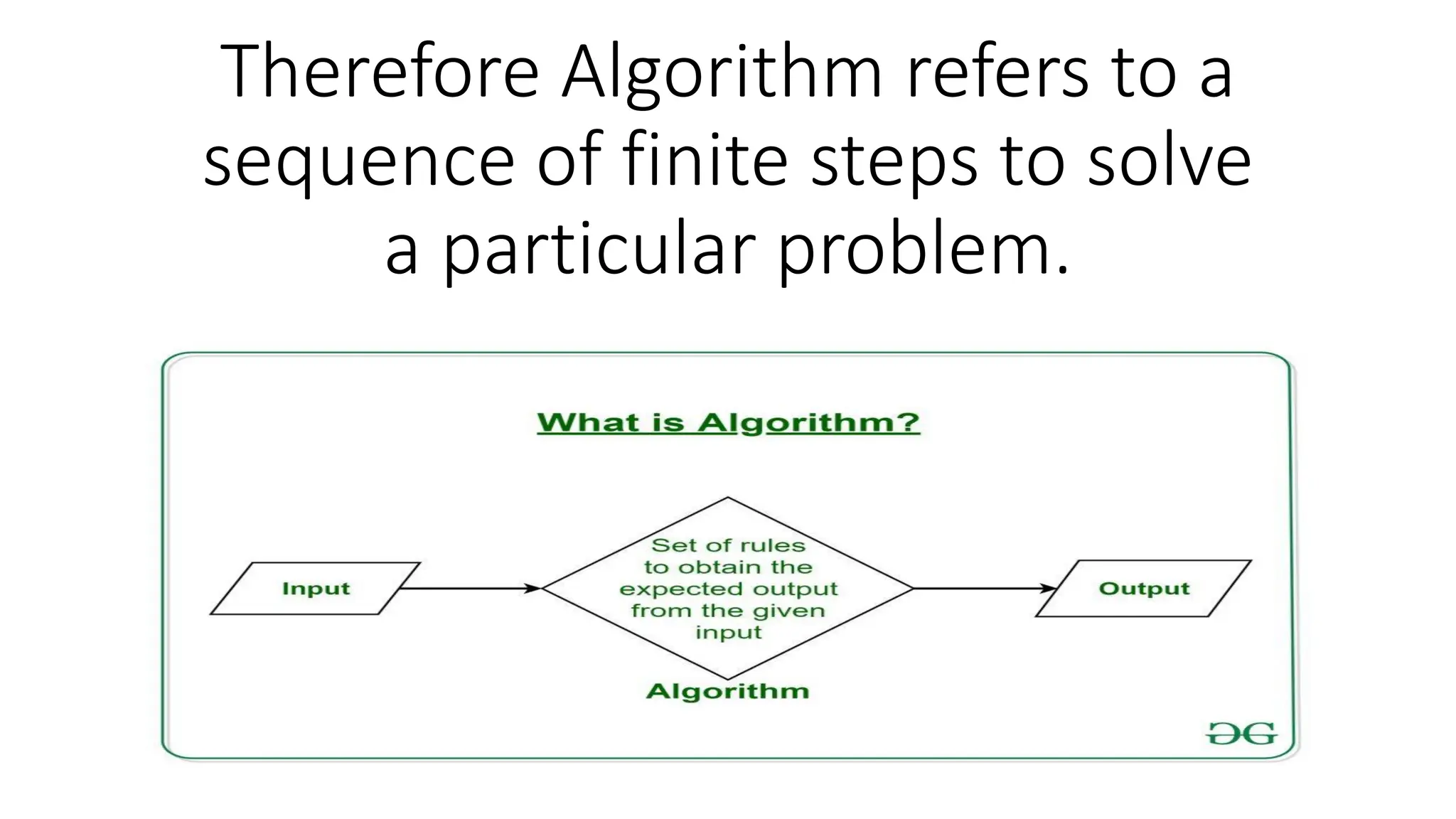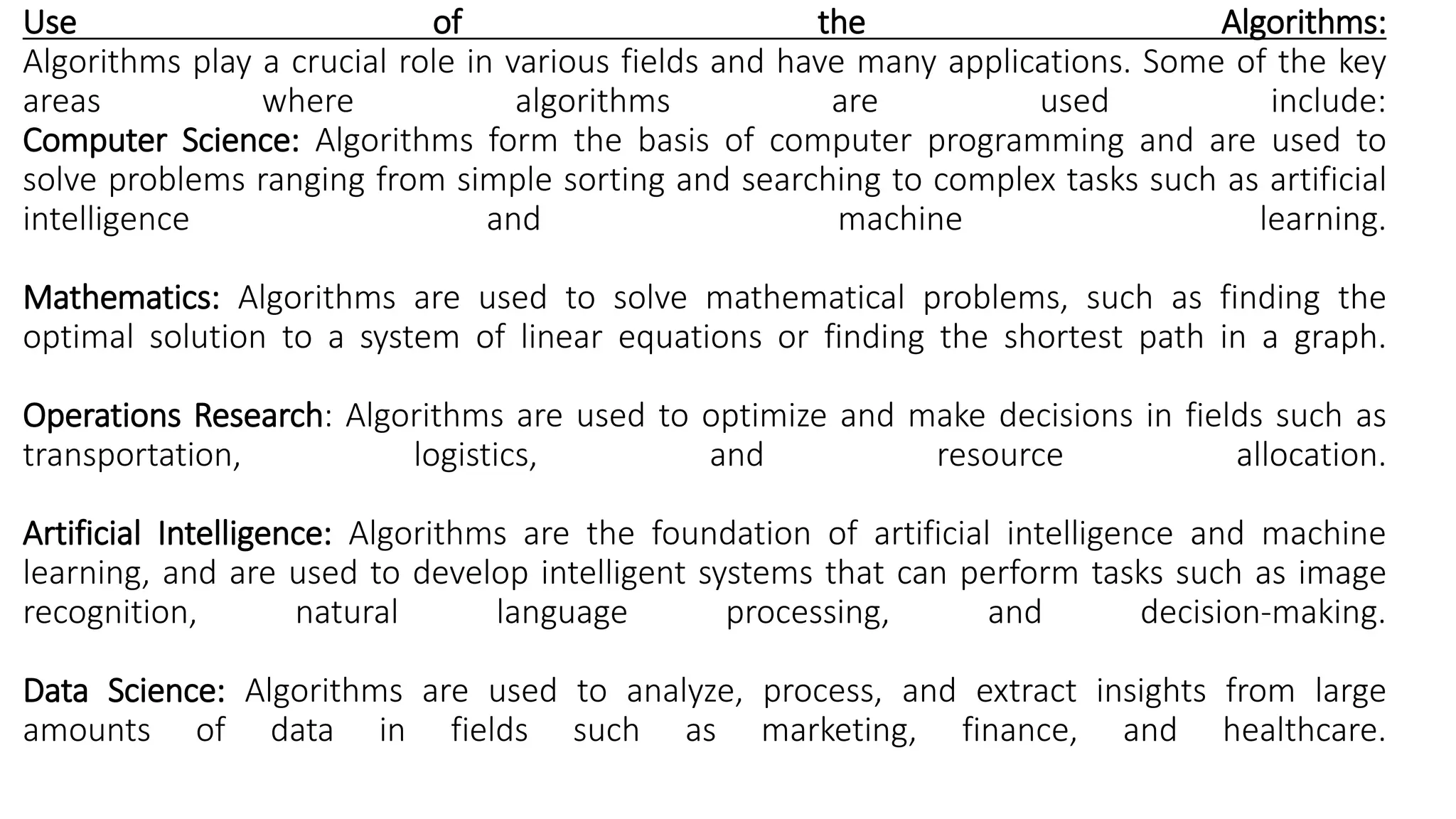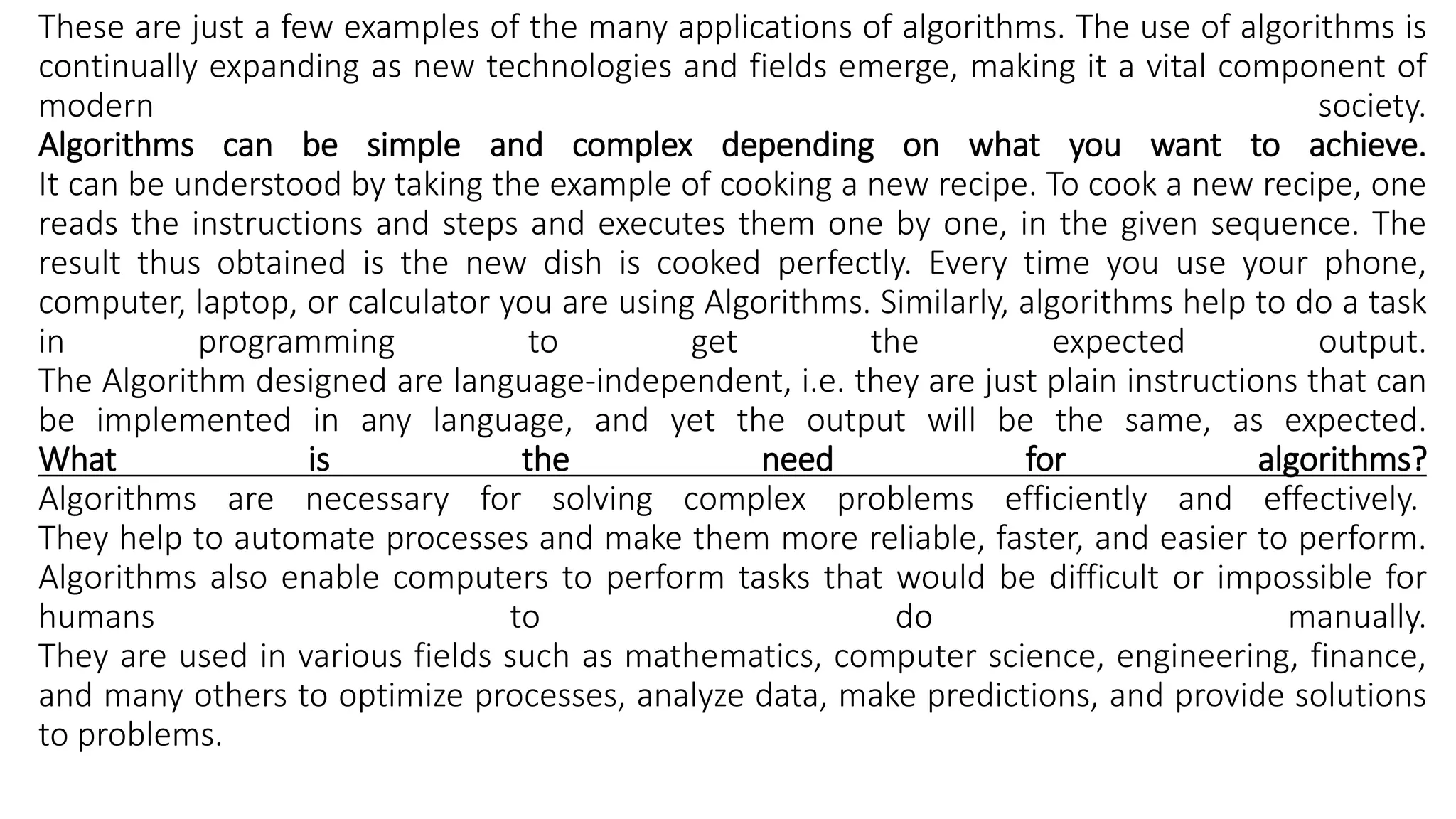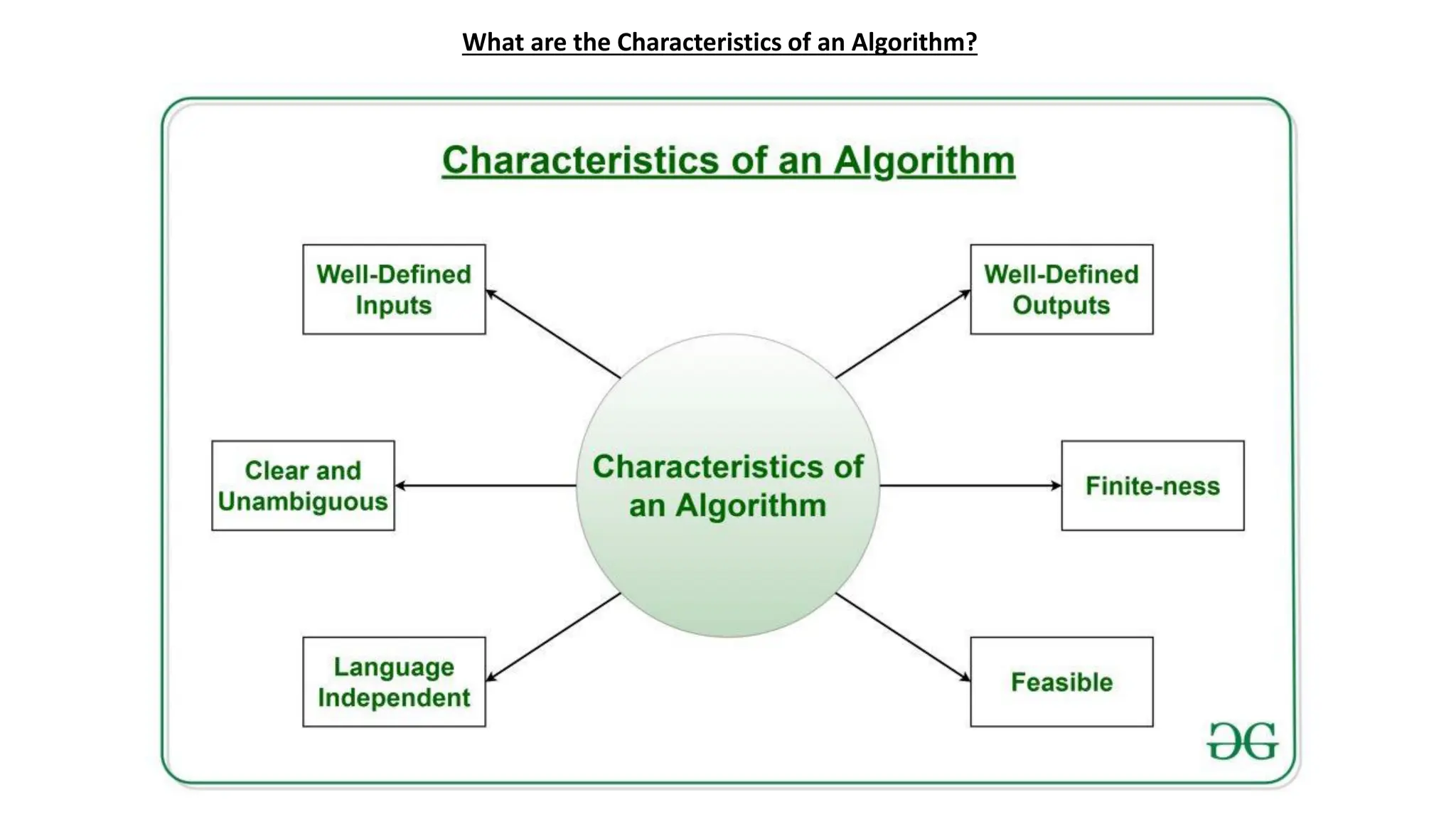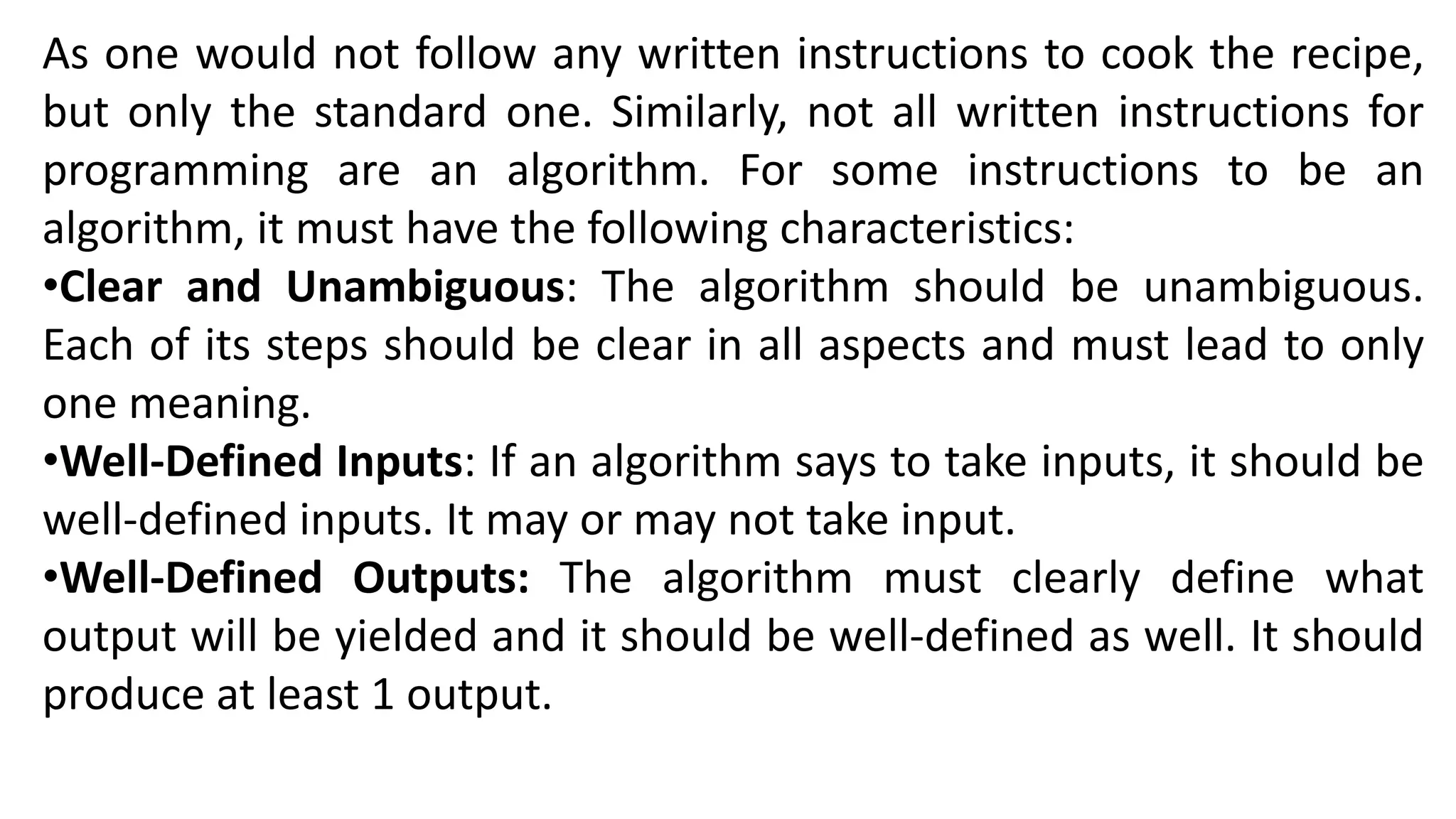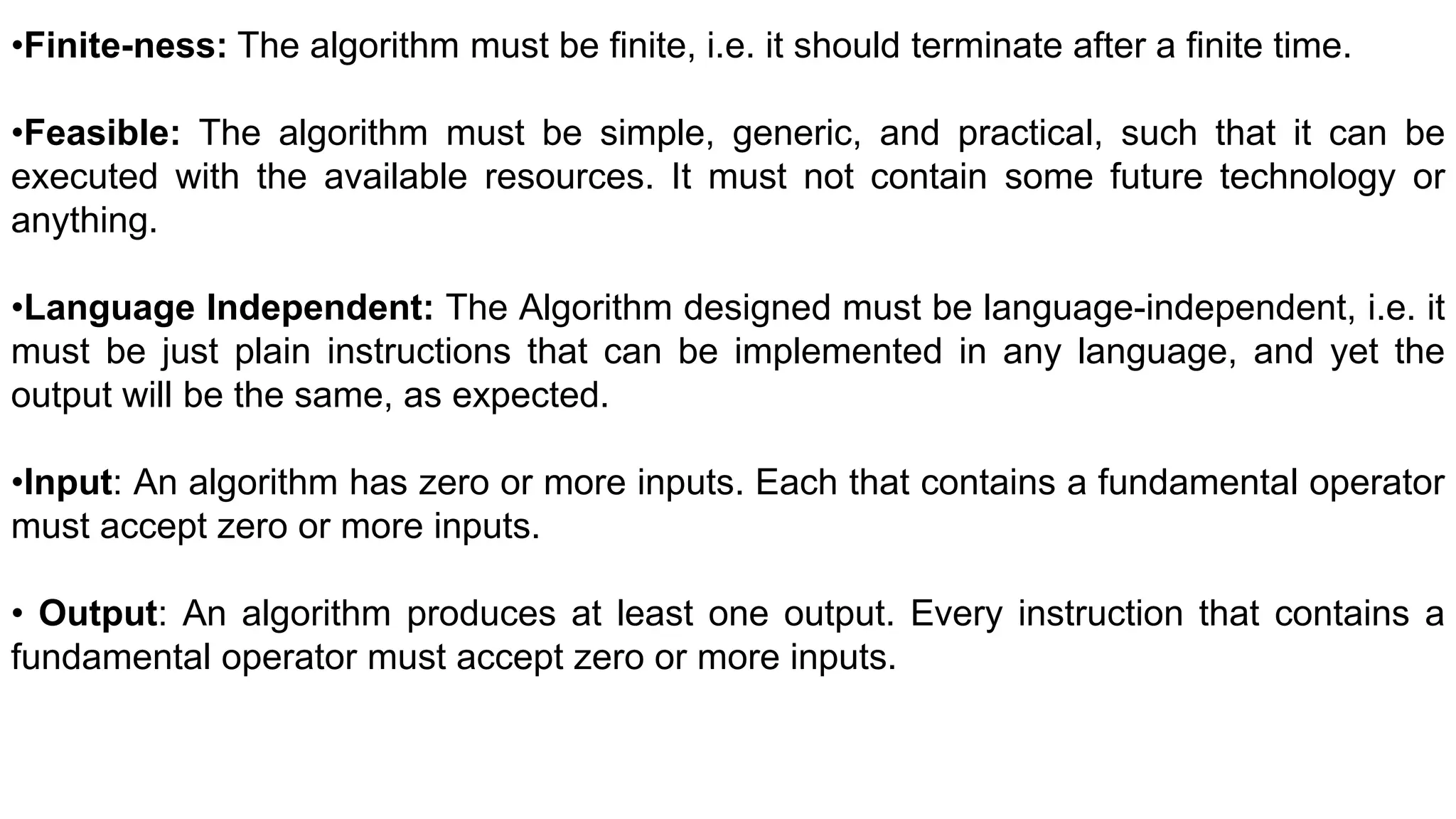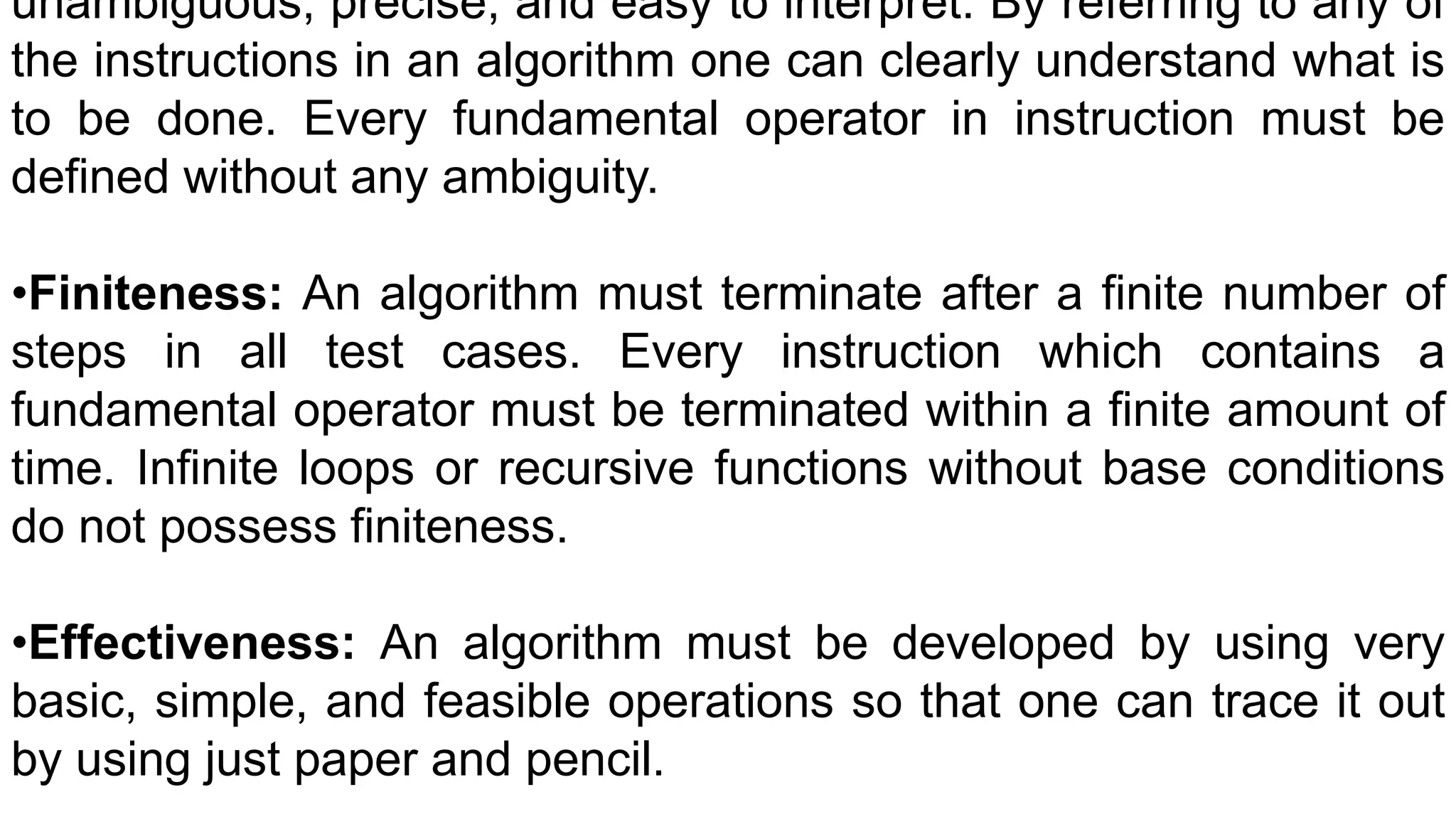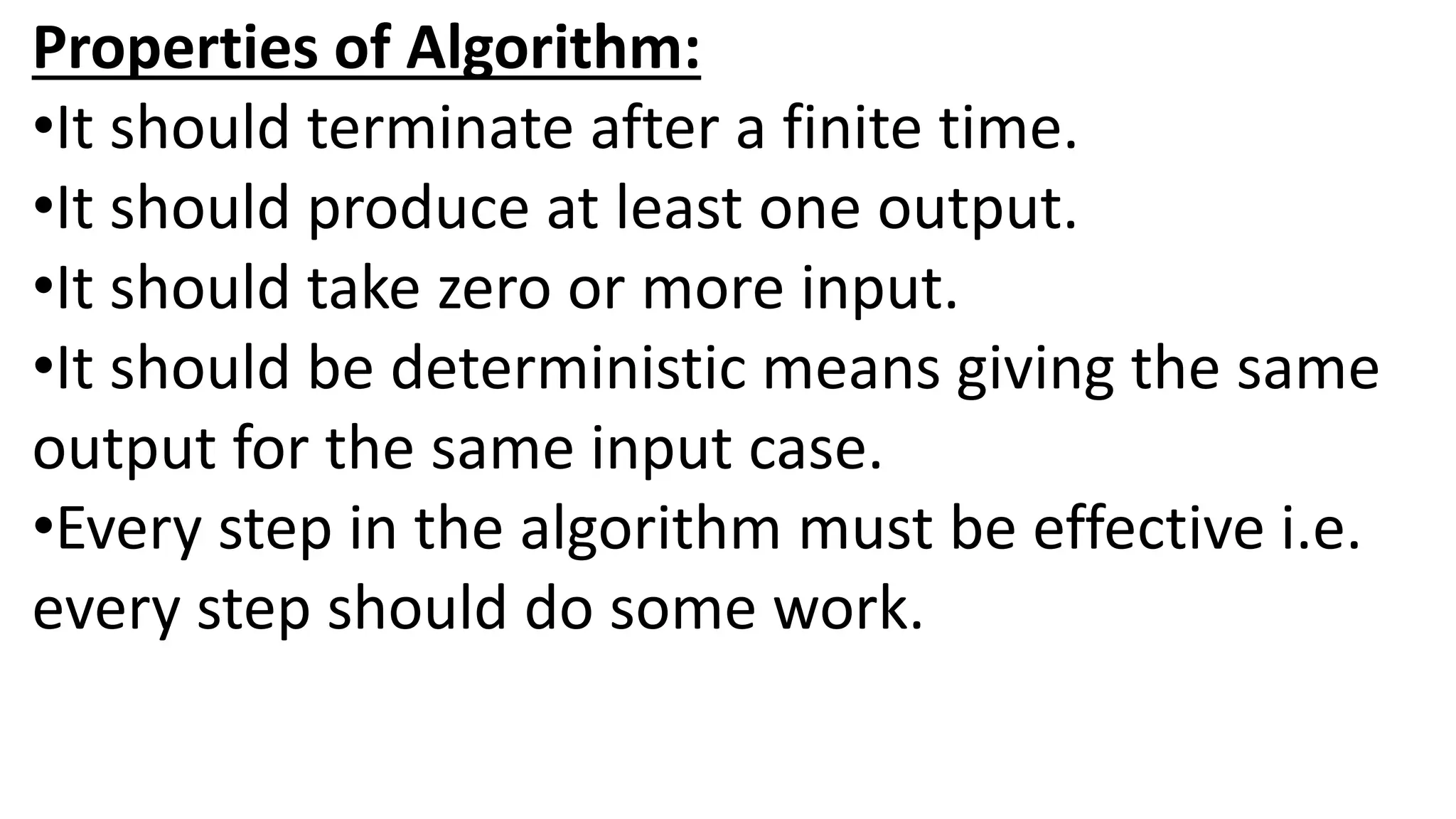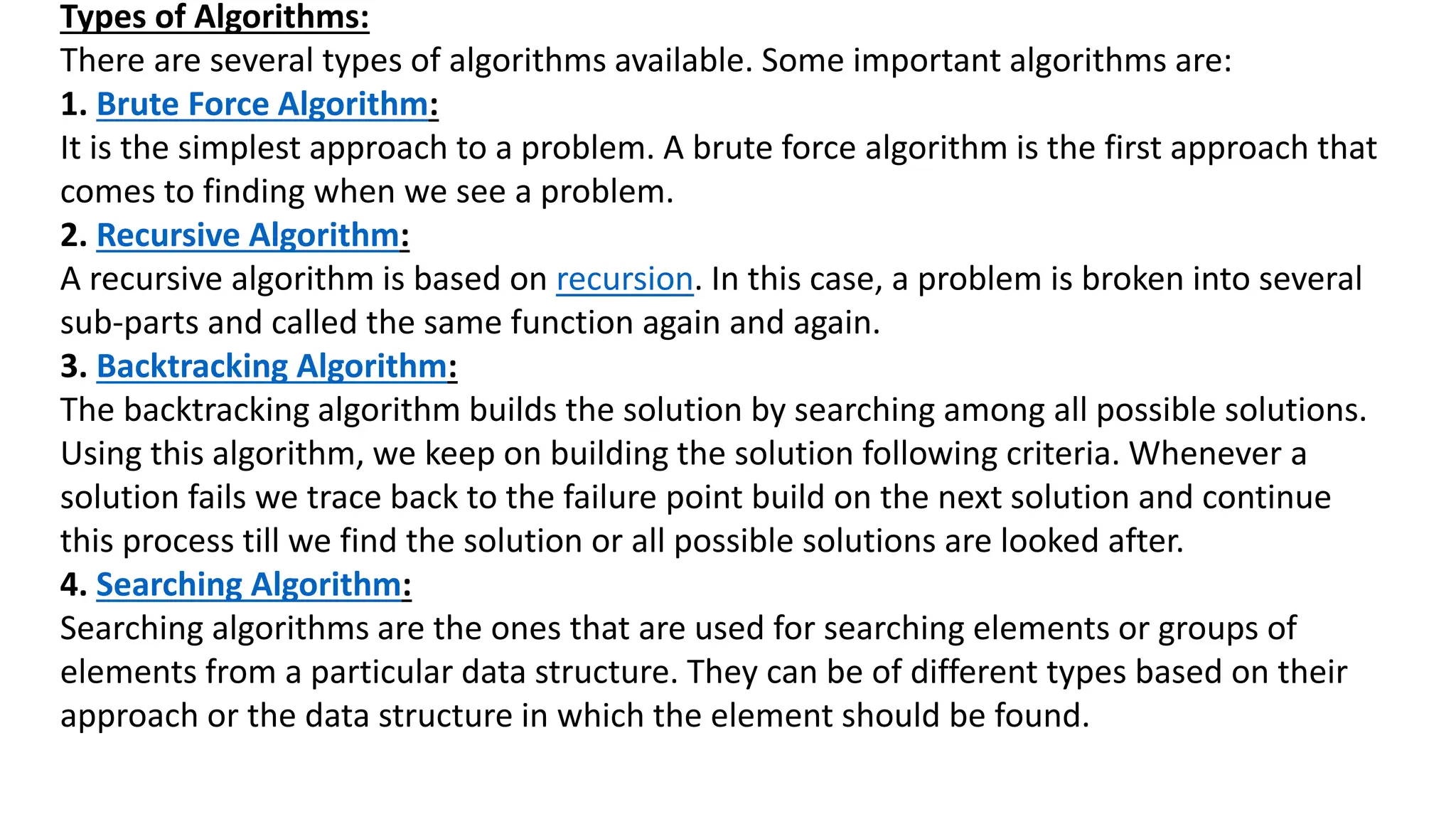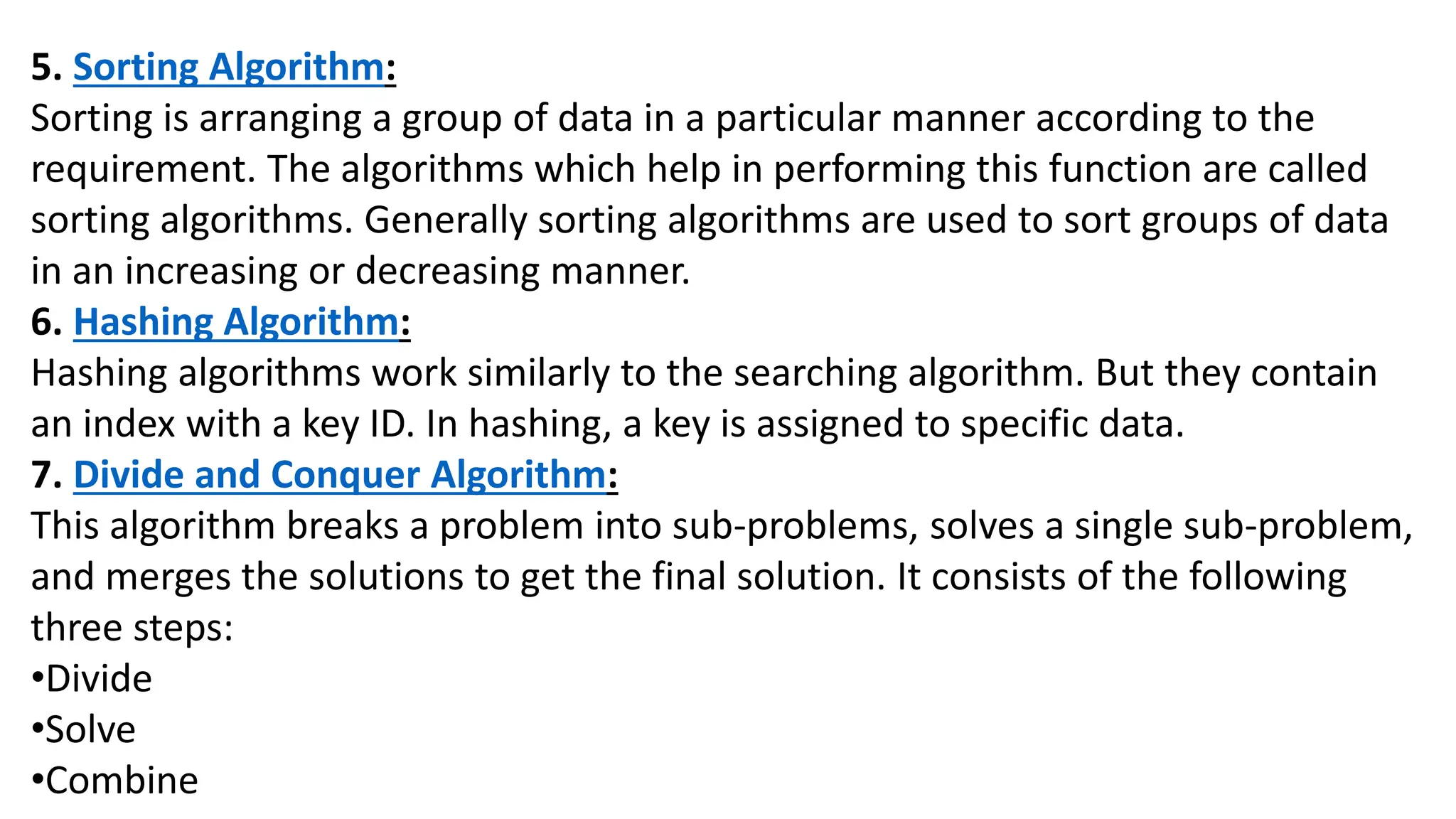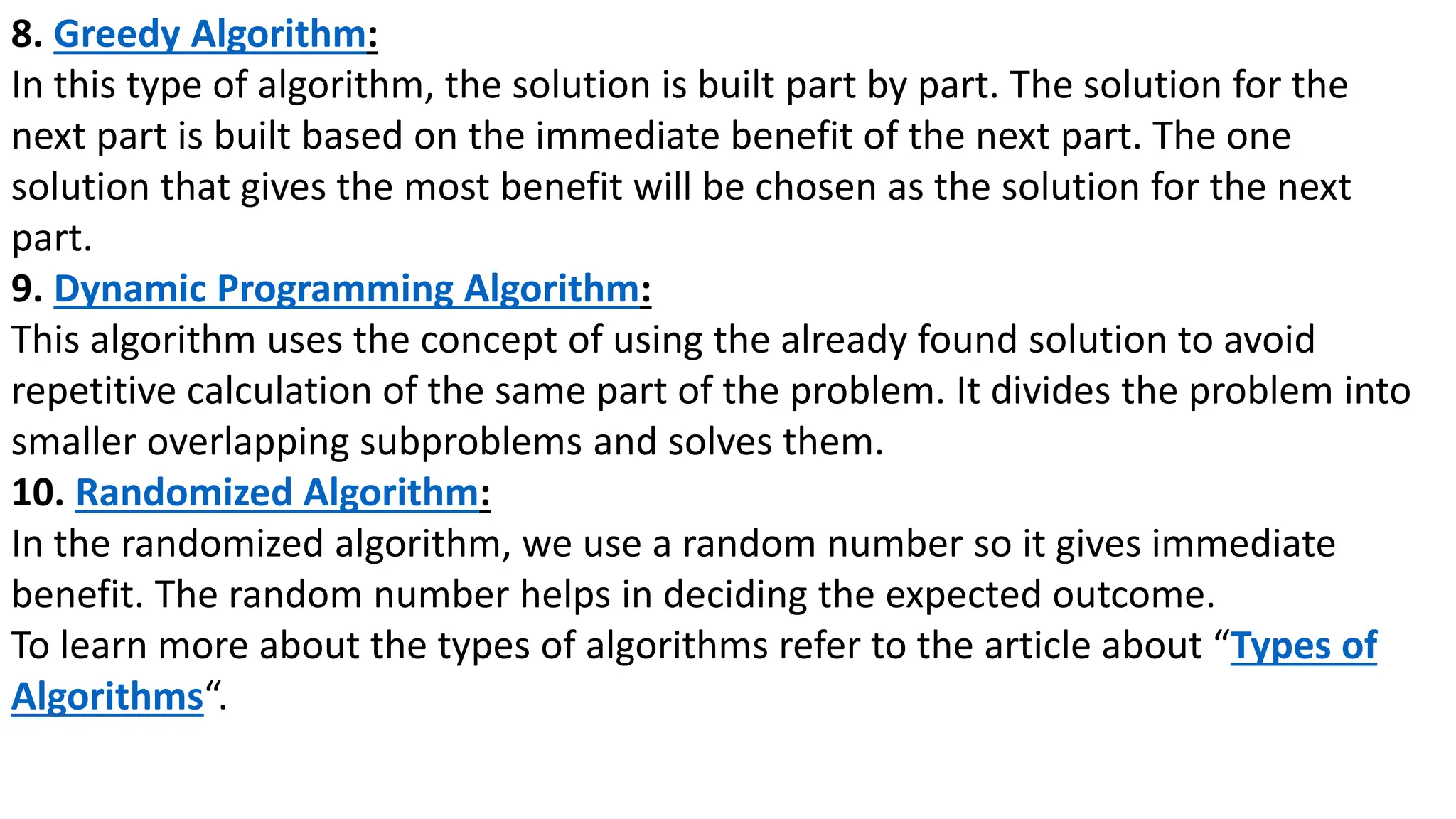An algorithm is defined as a finite set of rules or instructions for solving problems, widely utilized across multiple fields including computer science, mathematics, operations research, and artificial intelligence. Algorithms must possess specific characteristics such as being clear, finite, and language-independent, while also producing at least one well-defined output. Various types of algorithms exist, including brute force, recursive, backtracking, sorting, and dynamic programming, each serving different problem-solving needs.
